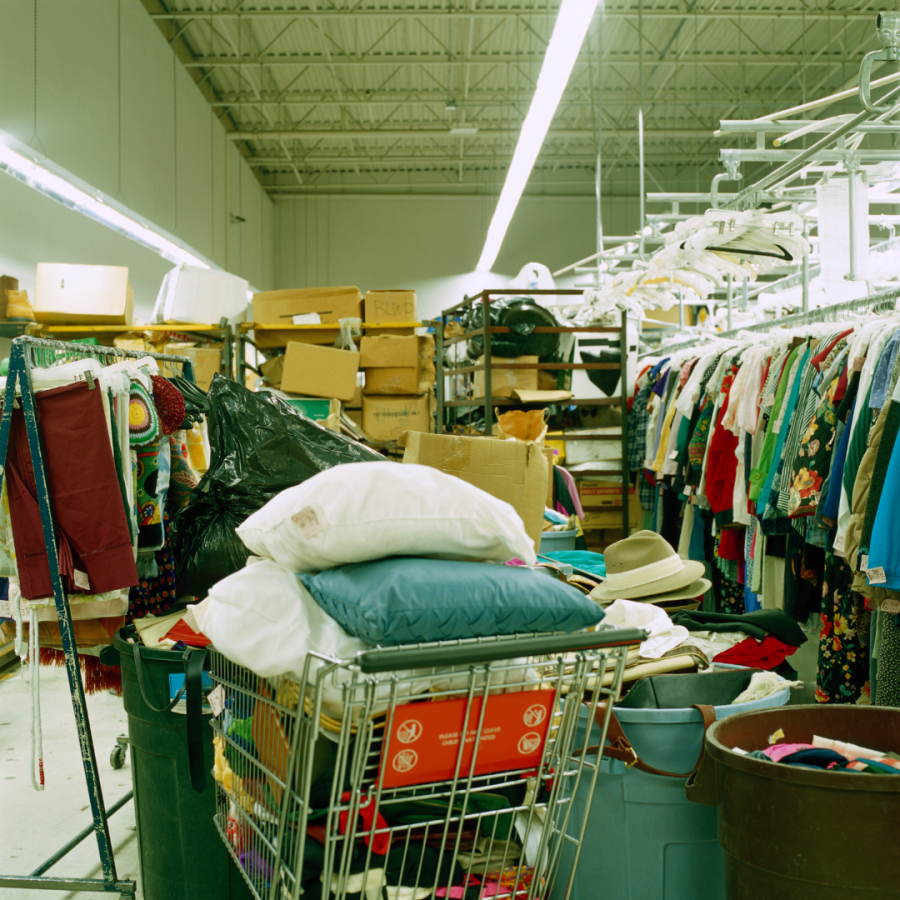Second hand clothing contributes to gentrification
Thrifting is the act of buying used clothes for a discounted price. It has gained popularity throughout the last decade, particularly for teens looking to be sustainable, look trendy or make a profit. Prior to the new wave of demand created by Gen Z, thrifting was once considered a symbol of poverty. Over time, it became common for second-hand sellers to resell thrift finds for higher prices on websites such as Depop and ThredUp. Due to a new array of clientele, thrift stores began raising their prices and making their stock less attainable for low-income families. Although thrifting is considered environmentally friendly, the new thrifting trend has led to the gentrification of second-hand stores such as Goodwill and Salvation Army.
Although the trend has introduced a new set of problems, the rise in popularity of second-hand shopping does merit justification for the trend itself. Large corporations are known for their unethical practices towards their employees. These practices range from recklessly contributing to textile pollution to exploiting labor laws in developing countries. According to the Pipe Dream Newspaper, it is common for companies to force their workers to endure dangerous work environments and unhealthy work hours for pay that does not meet a living wage. With many of these companies’ unethical practices coming to light, it is no wonder many people have opted out of contributing to their profit. This draws attention to the sharp contrast between large fashion corporations and thrift stores.
As stated in the Berkeley Economic Review, thrift stores offer a large range of unique clothing for a cheaper price, so many second-hand sellers gravitate towards their shelves to find pieces that they can later resell for a profit. There is nothing inherently wrong with this practice, but it does lead to the gentrification of thrift stores. “Gentrification” is when a poor urban area is changed to cater to a higher class, usually forcing the current inhabitants out. With gentrification, thrift stores like Goodwill are more compelled to cater to wealthier customers. The Miscellany News uses an example: instead of having a normal coat sold for $10, thrift stores will sell a branded designer coat at a slight discount from the original price. This makes it much more difficult for low-income families to afford clothing necessities at their local thrift shop, forcing them to look elsewhere for affordable clothing.
The thrifting trend has also had an impact on the plus-sized community. As stated in the Berkeley Economic Review, the poor are disproportionately more obese than the rich. With DIY-ing becoming a trend that consistently resurfaces, a large percentage of buyers will thrift plus-size clothing in order to DIY them into more stylish clothes that fit slimmer bodies. Seeing as many stores do not offer a reasonable range of sizes for plus-sized bodies, this presents another obstacle for low-income individuals.
The thrifting trend is meant to raise social awareness of the impact that large corporations have on the nation’s textile pollution. As stated in the Berkeley Economic Review, this creates a guilt-free shopping experience for those who thrift frequently. The problem with this is that wealthy consumers will go thrifting instead of buying from local businesses, vintage stores or ethical clothing brands that they can afford. They do not go thrifting out of necessity or because it is their only option. According to Miscellany News, wealthier people also tend to have a more flexible schedule that allows them more time to thrift. This means that they are more likely to find and buy higher quality clothing pieces, thus leaving low-income consumers with low quality items marketed at higher prices.
The people who participate in the thrifting trend themselves are not the reason the prices have gotten higher. According to the Imperfect Idealist, prices at Goodwill in 2020 are up to 3 times higher than the prices in 2010. 85% of donations made to thrift stores end up in landfills, so the prices are not going up because there is more demand than supply. All of the clothes are donated, therefore it is not justifiable to raise the prices immensely because there will always be a profit. The prices are going up excessively because of corporate greed. The CEO of Goodwill made $750,000 in 2018 while paying employees with disabilities less than a dollar per hour. The real culprits for unreasonably raising the prices are the companies themselves.
In conclusion, the thrifting trend does contribute to the gentrification of low-income neighborhoods, but it is really the corporate greed that hides under the guise of sustainability that further endorses it.

Clover Hill junior Krisanny is in her second year working hard on the Cavalier Chronicle. What started as a schedule mistake turned out to be a hidden...








Avery Belisle • Jan 20, 2022 at 12:43 pm
This is a GREAT article!! Definitely hit the mark and was very insightful!!